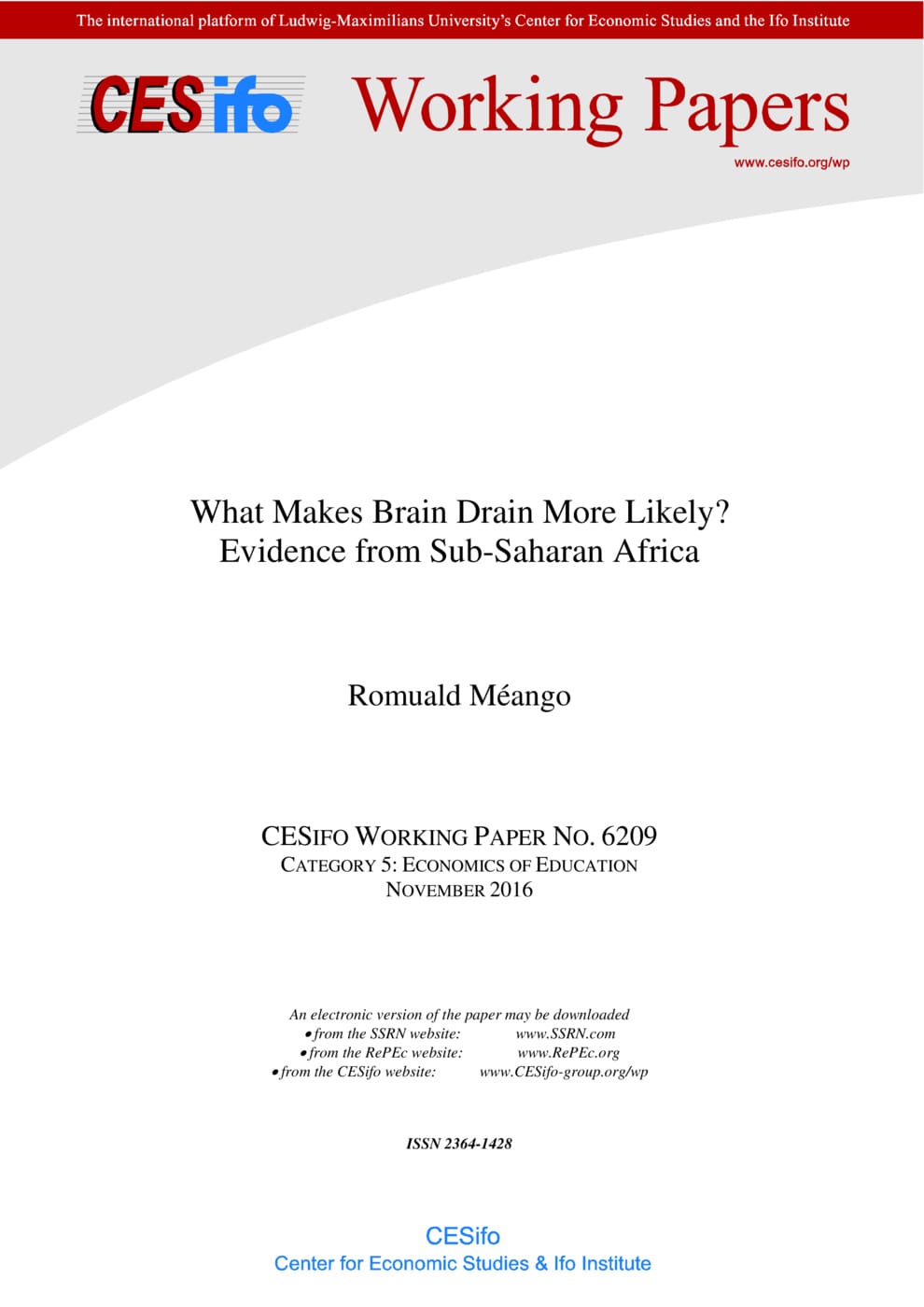What Makes Brain Drain More Likely? Evidence from Sub-Saharan Africa
CESifo, Munich, 2016
CESifo Working Paper No. 6209

In Sub-Saharan Africa, high-skilled workers are 13 times more likely to migrate than low-skilled ones. This sheer number has fueled fears about “Brain Drain” as only 3% of the population obtains tertiary education. Although migration prospects might give incentives to invest in schooling, it is still unclear for which households they exist and whether these can compensate for the selection of high-skilled workers into migration. This papers measures the selection, incentive and net effects of emigration from DR Congo, Ghana and Senegal to Europe. Institutional contexts and household characteristics are strong determinants of the three effects. Rich households experience a strong selection of high-skilled workers into migration, thereby decreasing the average schooling level in the origin countries. However, stronger incentives to invest in schooling partly or fully compensate for this decrease. By contrast, poor households experience small selection and equally small incentives, except in Senegal, where they exhibit negative incentives to invest in early schooling. This is possibly due to low returns to secondary education in Europe and/or binding liquidity constraints.
Economics of Education
Labour Markets